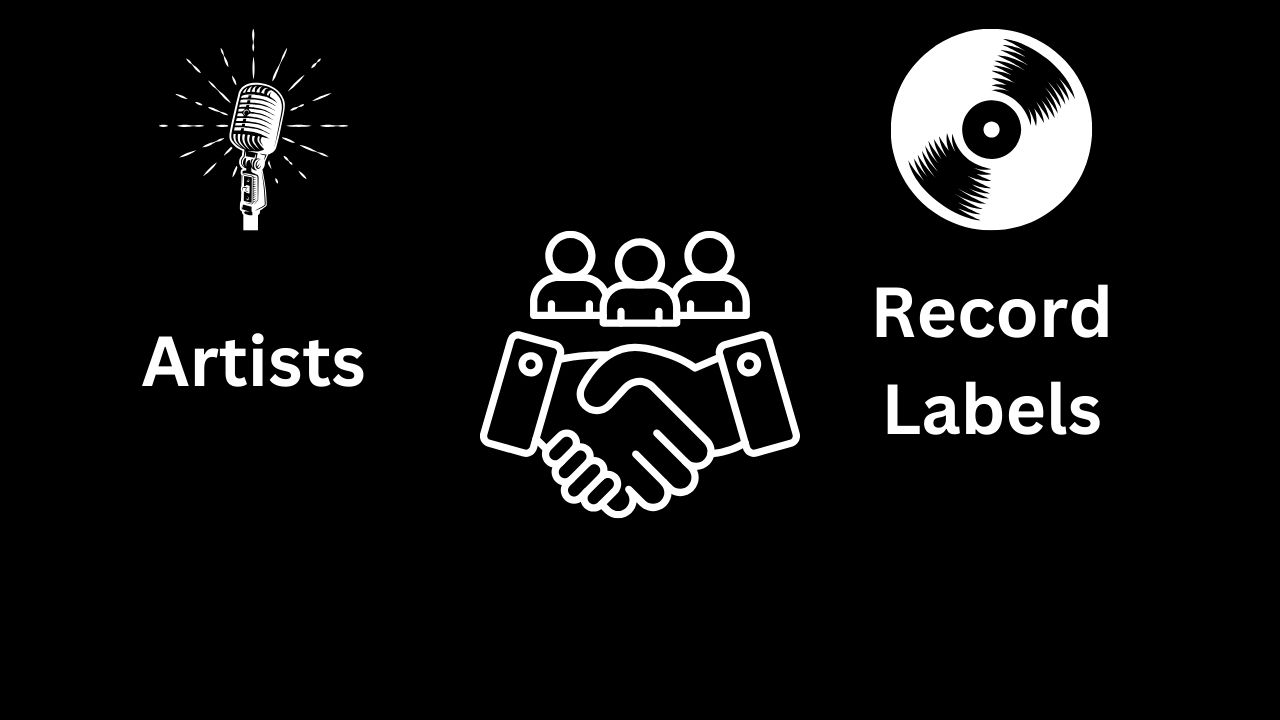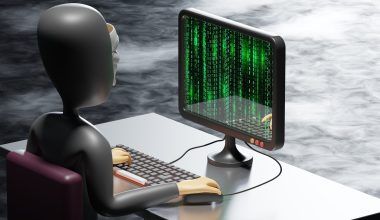The relationship between artists and record labels is crucial to the music industry. This relationship has changed over the years, affecting music rights, royalties, and how artists are promoted. This blog will explore this relationship, focusing on key aspects like contracts, royalties, creative control, and changes in the digital age.
Table of Contents
- Introduction
- Historical Context
- Types of Record Deals
- Contracts and Terms
- Royalties and Revenue
- Creative Control
- The Digital Shift
- Independent Artists vs. Record Labels
- Future Trends
- Case Studies
- Conclusion
Introduction
The relationship between artists and record labels is complex and important. It revolves around the creation, promotion, and distribution of music. Record labels play a key role in the success of artists by providing resources and platforms for their music. However, this relationship involves detailed agreements about music rights, royalties, and creative control, which can greatly impact artists’ careers.
Historical Context
Traditionally, record labels had significant power in the music industry. They had the resources to produce, promote, and distribute music on a large scale. Independent artists could not match this. This often meant artists had to sign contracts that heavily favored the labels, giving away a substantial portion of their music rights and royalties.
In the early days of the music industry, artists often had little bargaining power. They needed the financial backing and promotional capabilities of record labels to reach audiences. As a result, many artists received only a small fraction of the profits from their music. This imbalance led to many disputes and calls for fairer contracts.
Types of Record Deals
There are several types of record deals that define the relationship between artists and record labels. These include:
- Traditional Record Deal: The label funds the recording, marketing, and distribution of the album. In return, the label owns the master recordings and pays the artist a royalty. This type of deal is common but often criticized for favoring the label over the artist.
- 360 Deal: The label takes a percentage of all the artist’s revenue streams. This includes music sales, live performances, merchandise, and endorsements. This deal is more holistic but often more controlling. It gives labels a stake in nearly every aspect of an artist’s career.
- Distribution Deal: The artist retains ownership of their recordings and pays the label a fee to distribute their music. This deal gives the artist more control but less support in marketing and promotion. It is favored by artists who want to maintain more independence.
- Licensing Deal: The artist licenses their music to the label for a specific period or purpose. This deal can be beneficial for both parties as it provides flexibility and shared profits without transferring full ownership of the music.
Contracts and Terms
Contracts are the foundation of the relationship between artists and record labels. These contracts outline the rights and obligations of both parties. Key terms include:
- Advance: A sum of money paid to the artist upfront, which is recouped from future royalties. Advances provide artists with the funds needed to produce their music but are often recoupable. This means the artist must pay them back from their earnings.
- Royalties: The percentage of revenue paid to the artist from music sales, streaming, and other sources. Royalty rates can vary widely and are often a point of negotiation in contract discussions.
- Ownership of Masters: Determines who owns the original recordings of the music. This is a critical issue. Owning the masters can mean more control and higher earnings for the artist.
- Creative Control: The degree of artistic freedom the artist retains in the production of their music. Labels may want to influence the music to ensure commercial success. Artists often seek to maintain their creative vision.
- Duration: The length of time the contract is in effect and the number of albums the artist is required to produce. Long-term contracts can provide stability but may also limit an artist’s ability to renegotiate terms.
Royalties and Revenue
Royalties are a critical aspect of the relationship between artists and record labels. They are the primary way artists earn money from their music. There are several types of royalties:
- Mechanical Royalties: Earned from the sale of physical and digital copies of the music. These are paid by the record label to the artist and songwriters.
- Performance Royalties: Earned when the music is played on the radio, in public venues, or streamed online. These royalties are collected by performance rights organizations and distributed to the artist and songwriters.
- Synchronization Royalties: Earned when the music is used in movies, TV shows, commercials, etc. Sync deals can be highly lucrative and provide significant exposure for artists.
The distribution of these royalties depends on the terms of the contract. In many traditional deals, artists receive a small percentage of the revenue, while the label takes the larger share. This distribution model has been criticized for being unfair to artists, leading to calls for more equitable arrangements.
Creative Control
Creative control is often a contentious issue in the relationship between artists and record labels. While labels can provide valuable input and resources to improve the music’s commercial appeal, artists may feel restricted if they do not have the freedom to express their artistic vision. The balance of creative control varies from one contract to another, with some artists negotiating for more autonomy.
Labels often argue that their experience and market knowledge can help shape a commercially successful product. However, this can sometimes lead to conflicts if the artist’s vision does not align with the label’s expectations. Artists like Prince and Taylor Swift have famously fought for more control over their music. This highlights the importance of creative freedom in the industry.
The Digital Shift
The advent of digital music platforms has significantly altered the relationship between artists and record labels. Streaming services like Spotify, Apple Music, and YouTube have become the primary means of music distribution, changing how revenue is generated and shared. While these platforms have democratized access to music, they have also led to debates about fair compensation for artists.
Digital distribution has reduced the costs associated with producing and distributing physical copies of music, allowing more artists to reach global audiences. However, the revenue from streaming is often lower than from traditional sales. This leads to concerns about sustainability for artists. Labels and artists must navigate these changes, balancing the benefits of digital reach with the need for fair compensation.
Independent Artists vs. Record Labels
The rise of independent artists has introduced a new dynamic in the relationship between artists and record labels. Independent artists retain full ownership of their music and often have greater creative control. They rely on social media, digital distribution services, and direct fan engagement to build their careers. However, they may lack the resources and industry connections that traditional labels provide.
Record labels, on the other hand, continue to offer valuable support in terms of funding, marketing, and distribution. For many artists, signing with a label remains a viable path to achieving mainstream success. The decision to go independent or sign with a label depends on the artist’s goals, resources, and the specific terms of any potential deals.
Future Trends
As the music industry continues to evolve, several trends are shaping the relationship between artists and record labels:
- More Favorable Deals: Increasing awareness of unfair contract terms has led to a push for more artist-friendly deals. Artists are negotiating for better royalty rates, shorter contract durations, and greater control over their music.
- Direct-to-Fan Platforms: Platforms like Bandcamp and Patreon allow artists to connect directly with their fans, reducing the need for traditional label support. These platforms enable artists to retain more revenue and maintain creative control.
- Blockchain Technology: Blockchain offers the potential for transparent and automated royalty distribution, ensuring artists are fairly compensated for their work. This technology could revolutionize how music rights are managed and royalties are paid.
- Globalization: The global reach of digital platforms has expanded the potential audience for artists. Labels are increasingly focusing on international markets, promoting artists across different regions and cultures.
- Artist Empowerment: Empowering artists with the knowledge and tools to manage their careers is becoming more common. Educational resources, workshops, and industry support networks are helping artists navigate the complexities of the music business.
Case Studies
Examining specific cases can provide deeper insights into the relationship between artists and record labels:
Taylor Swift and Big Machine Records
Taylor Swift’s battle with Big Machine Records over the ownership of her master recordings highlights the importance of contractual terms. Swift signed with Big Machine at the beginning of her career, and the label retained ownership of her masters. When Swift attempted to purchase her masters, she faced significant challenges, leading her to re-record her earlier albums to regain control.
Chance the Rapper
Chance the Rapper is an example of an independent artist who achieved significant success without signing with a traditional label. By leveraging social media, streaming platforms, and direct fan engagement, Chance built a substantial following and won several Grammy Awards. His success demonstrates the potential for independent artists in the digital age.
Prince
Prince’s struggle for creative control and ownership of his music is legendary. He famously changed his name to an unpronounceable symbol to protest his contract with Warner Bros. Records. Prince’s battle emphasized the importance of artists retaining control over their creative work and highlighted issues within traditional record deals.
Conclusion
The relationship between artists and record labels is evolving in the digital age. While traditional record deals still exist, new models are emerging that offer artists more control and better compensation. Understanding the terms of these relationships and the implications for music rights is crucial for artists as they navigate their careers. By making informed decisions, artists can find the right balance between creative freedom and commercial success.
Related Article:
- Top 10 Most Popular Indian Artists on Spotify
- Best Free Artist Portfolio Builder: A Comprehensive Guide
- How Do Artist Make Money from Streaming
For additional resources on music marketing and distribution, visit Deliver My Tune.






